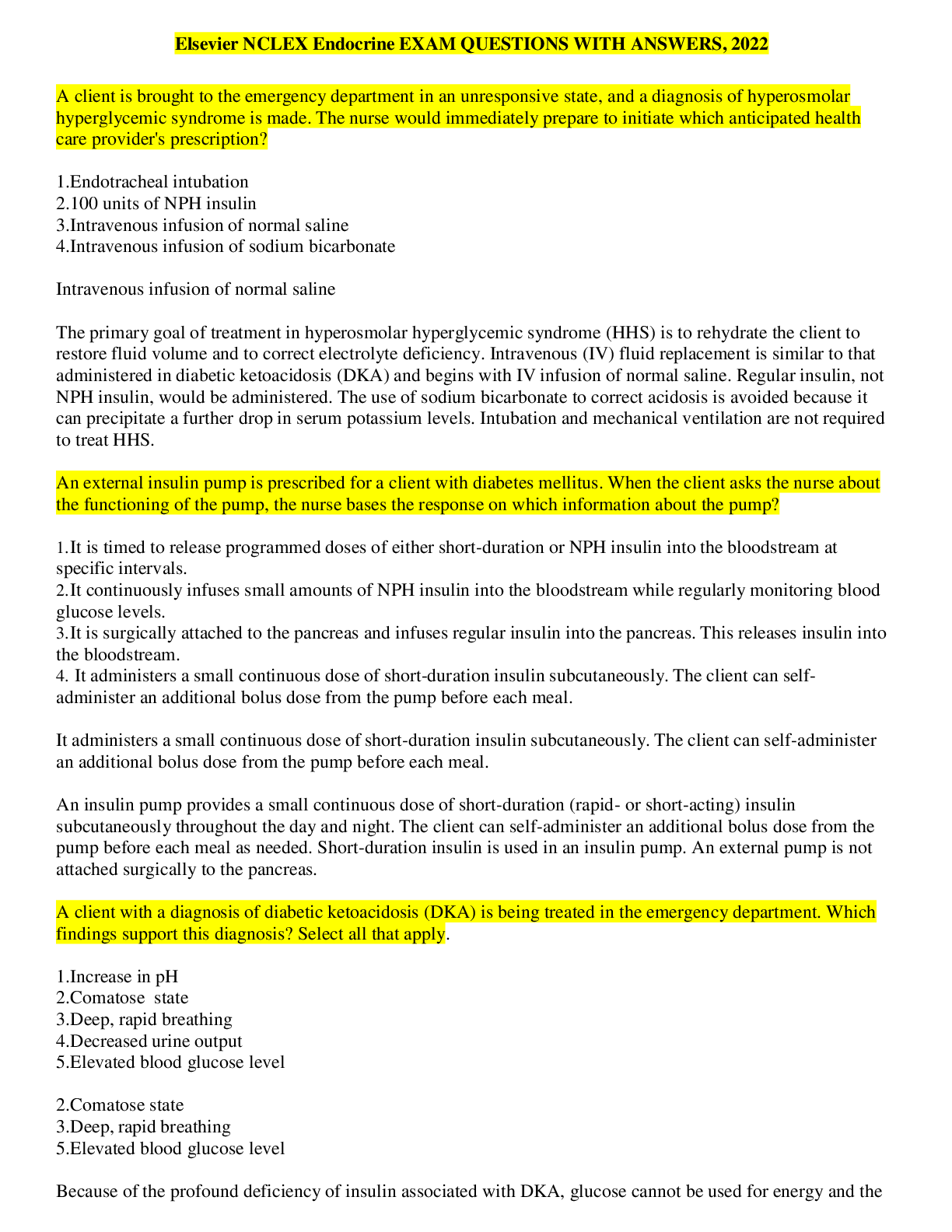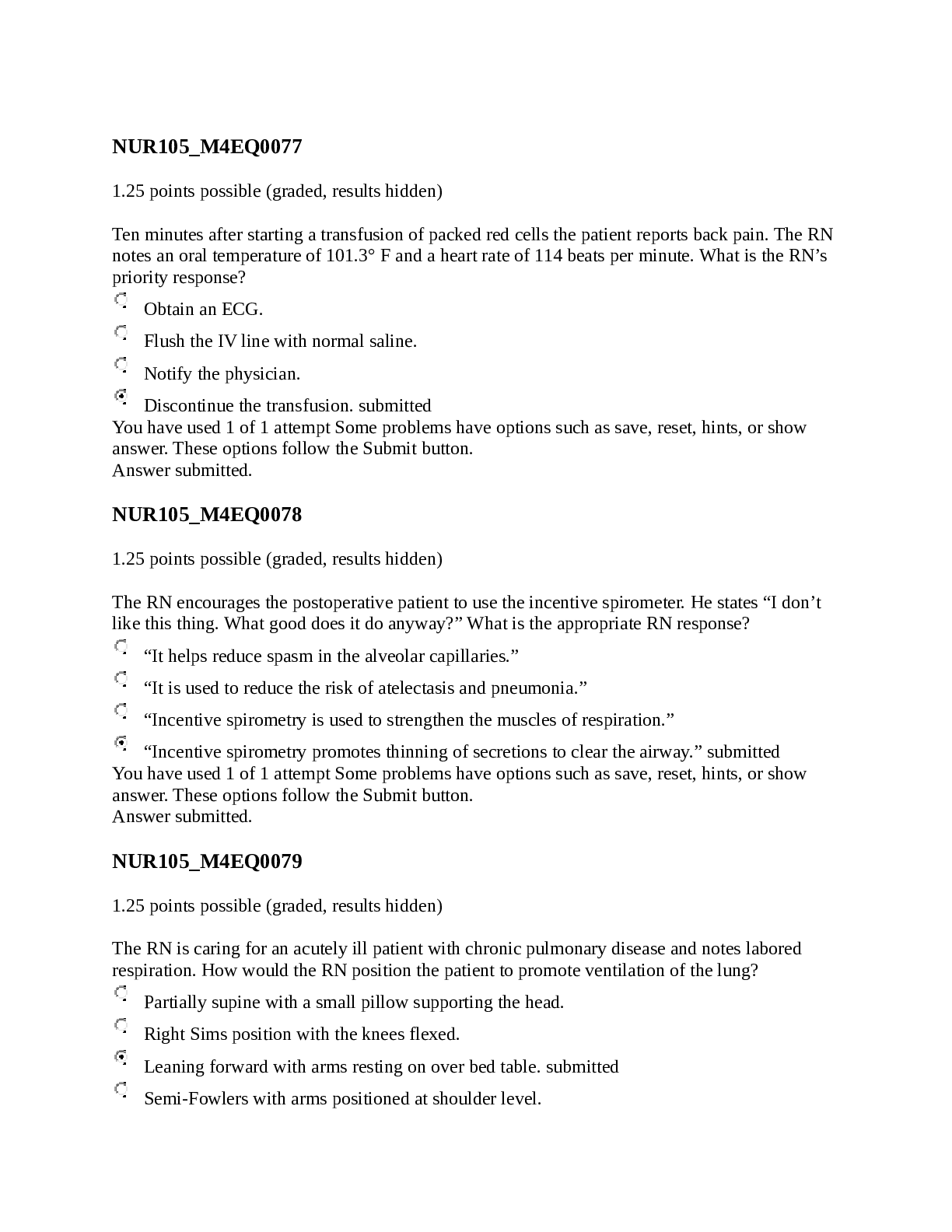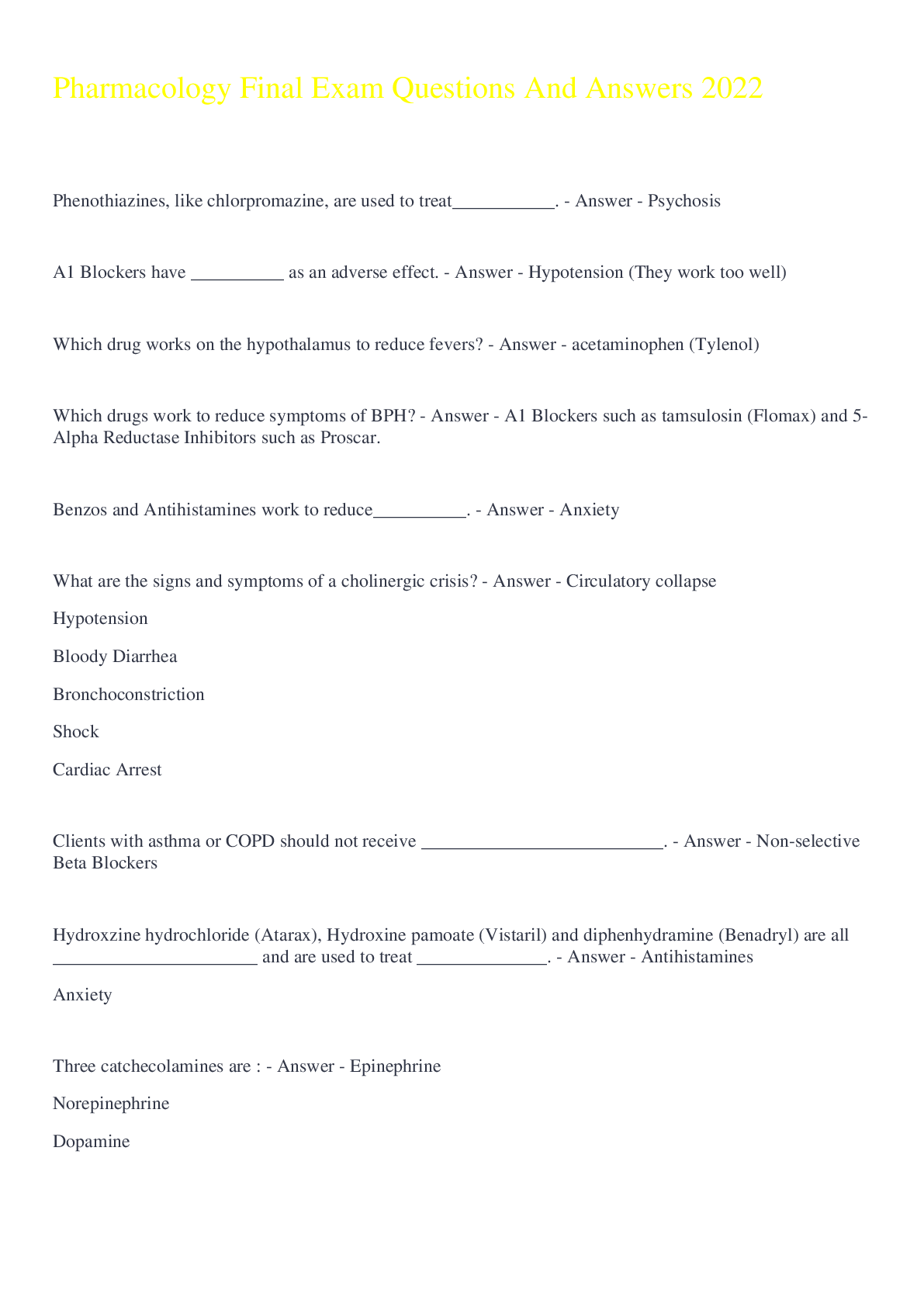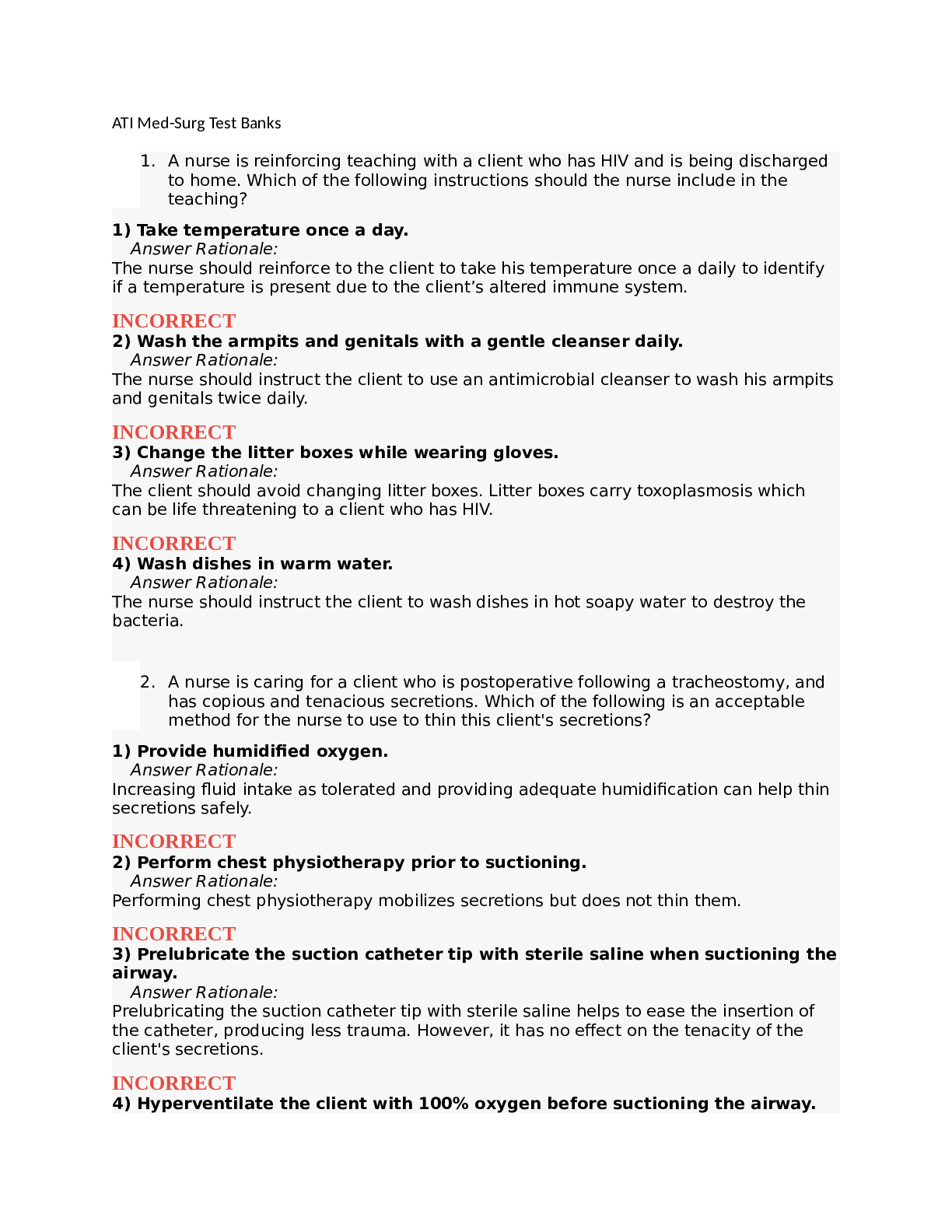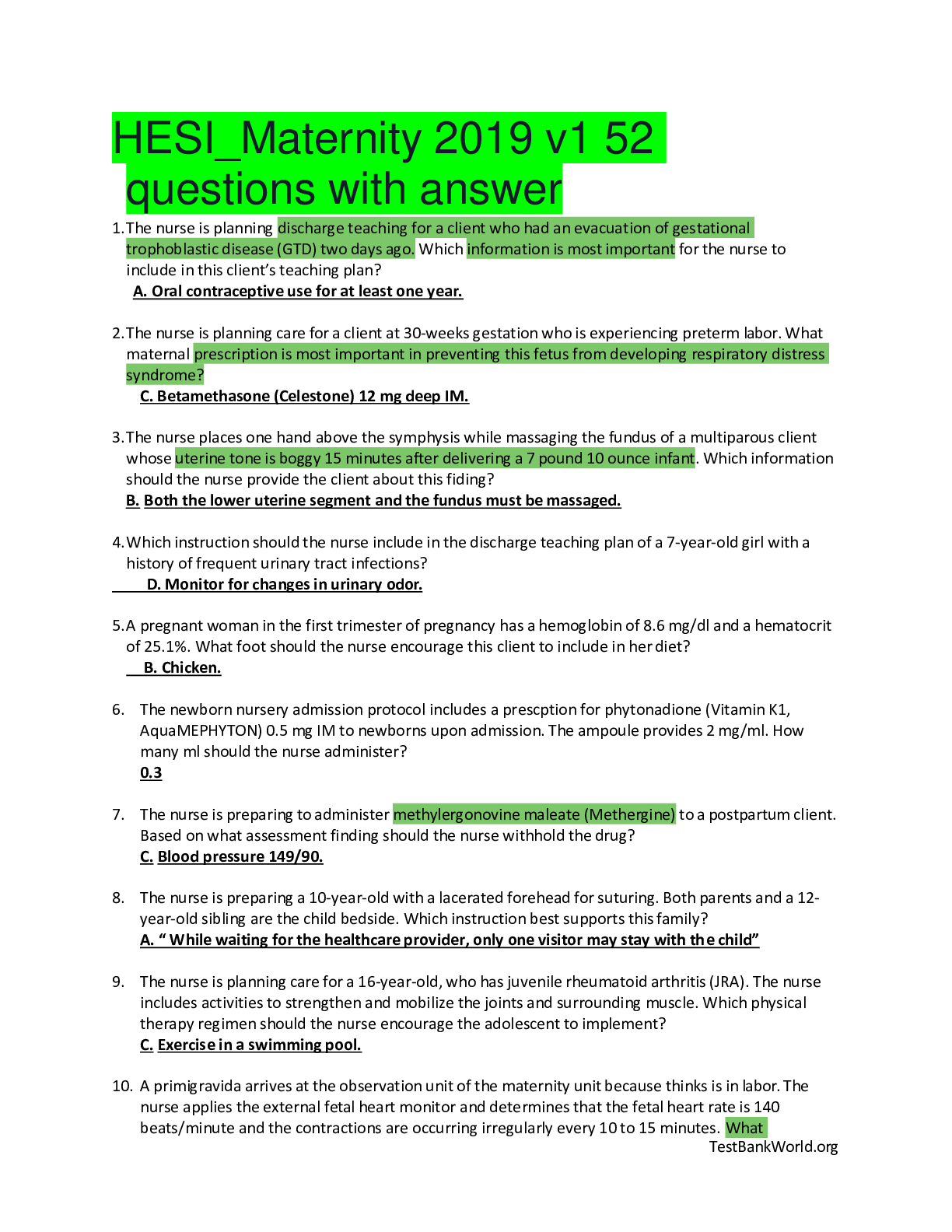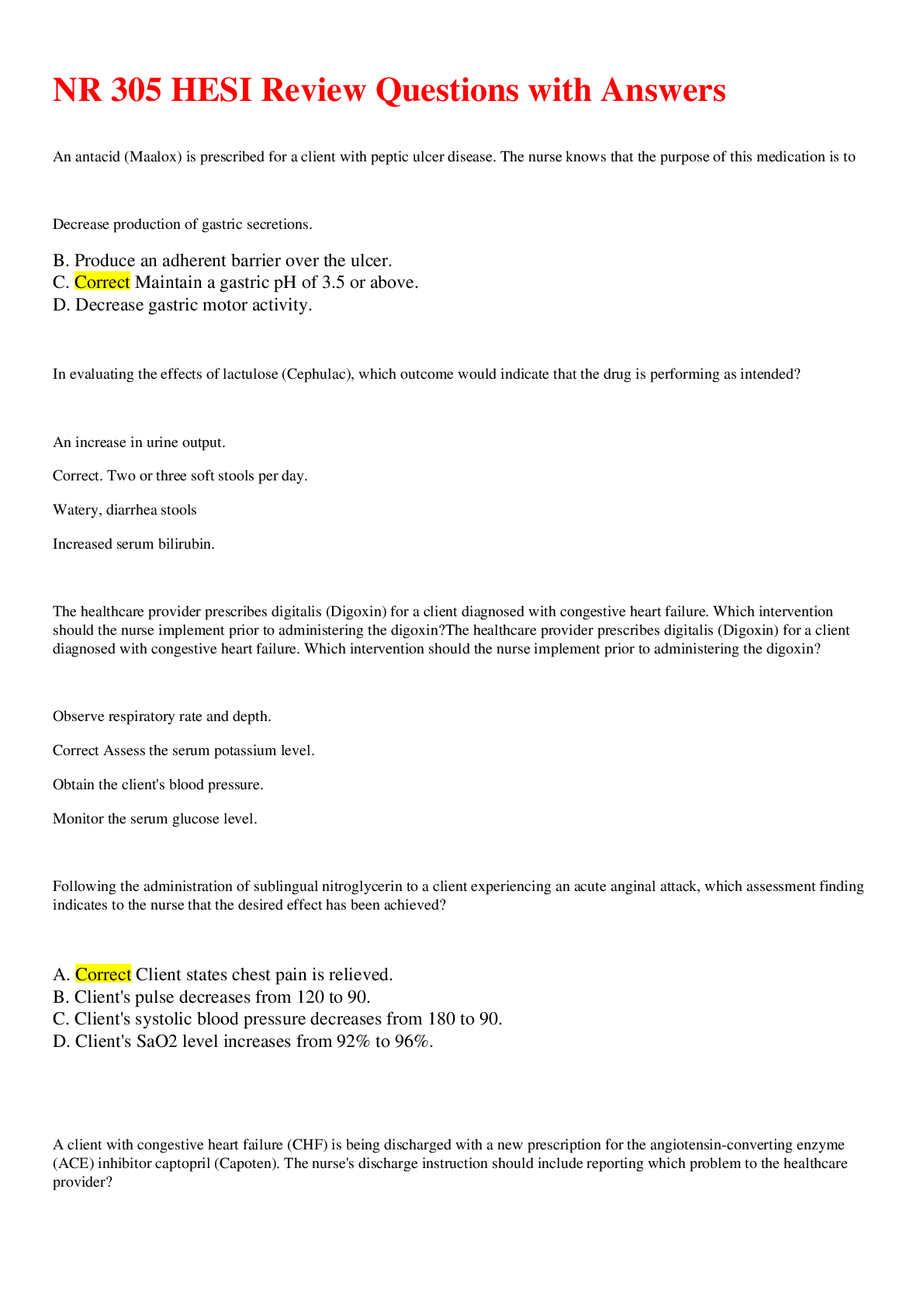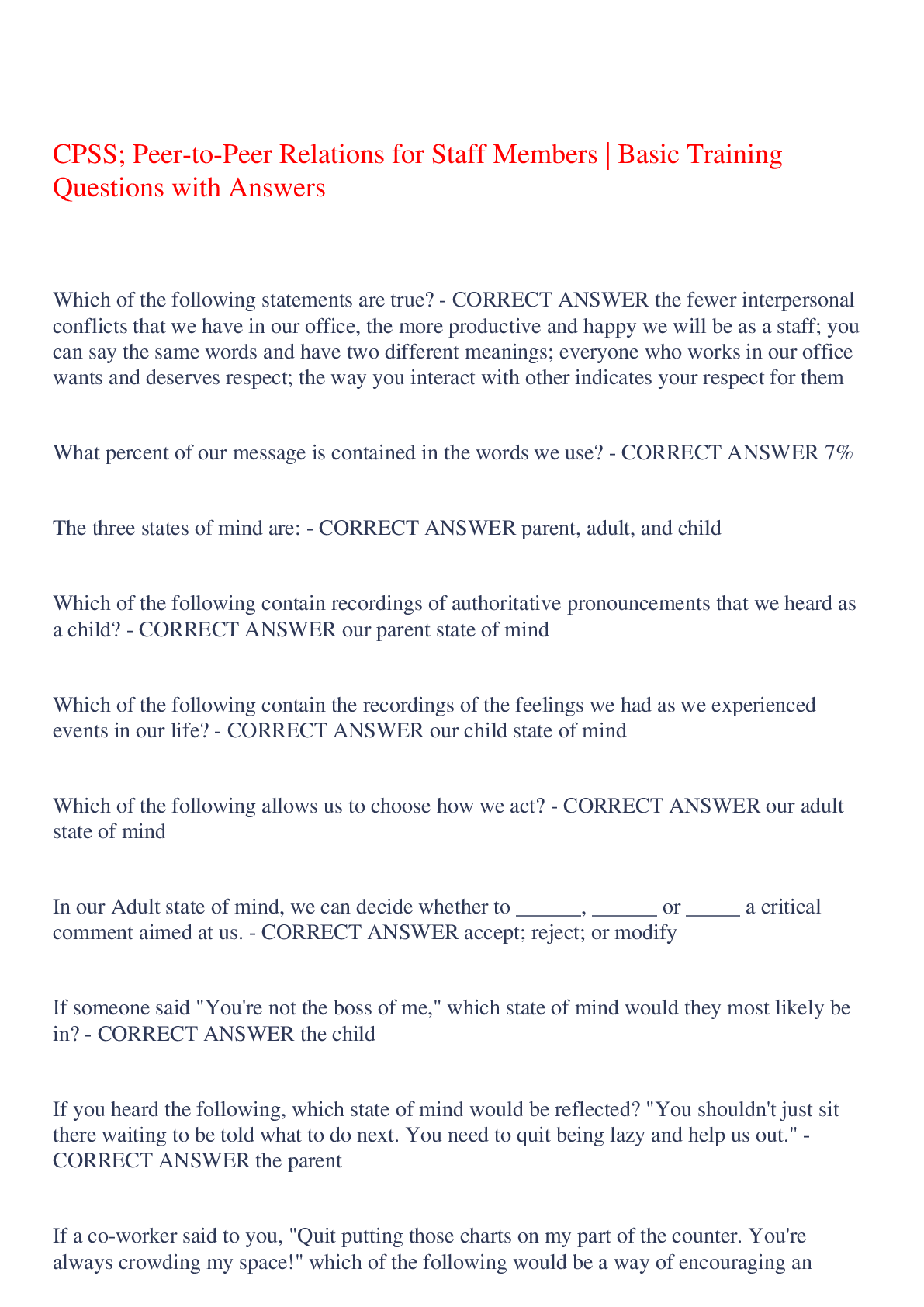TNCC 9TH EDITION TESTS Comprehensive Questions with Answers, 2024
Document Content and Description Below
TNCC 9TH EDITION TESTS Comprehensive Questions with Answers, 2024-You are caring for a patient who was thrown from a bike and was not wearing a helmet. While performing the head-to-toe assessment, you... note clear drainage from the right ear. Which of the following is the most appropriate next step? A. Clean the ear with a cotton-tipped applicator. B. Pack the ear with gauze. C. Notify the physician D. Document and continue the exam. - C. Notify the physician A patient is brought to the emergency department of a rural hospital following a high-speed motor vehicle collision. When significant abdominal and pelvic injuries are noted in the primary survey, what is the priority intervention? A. Initiate transfer to a trauma center B. Attempt family notification C. Obtain additional imaging studies D. Place an indwelling urinary catheter - A. Initiate transfer to a trauma center An adult who fell from a second story roof is brought to the emergency department by private vehicle. The patient is confused with unlabored respirations and has strong, palpable radial pulses. There is an open wound in proximity to an obvious deformity of the left lower extremity. What is the priority intervention? A. Initiate cervical spine stabilization B. Apply a splint to the lower extremity C. Put the patient on portable oxygen. D. Log roll the patient onto a spine board - A. Initiate cervical spine stabilization An adult patient who sustained a severe head trauma has been intubated and is being manually ventilated via a bag-mask device at a rate of 18 breaths/minute. The patient has received one intravenous fluid bolus of 500 mL of warmed isotonic crystalloid solution. The PaCO2 is 30 mm Hg (4.0 kPa), and the pulse oximetry is 92%. BP is 142/70 mm Hg. What is the most important intervention to manage the cerebral blood flow? A. Decrease the rate of manual ventilation. B. Initiate another fluid bolus. C. Recheck endotracheal tube placement. D. Increase the amount of oxygen delivered. - A. Decrease the rate of manual ventilation. An adult patient is brought to the emergency department following a vehicle "roll-over" with prolonged extrication. Assessment reveals swelling and bruising to the right proximal thigh and a weak pedal pulse. Skin is pale, cool, and moist. What is the most appropriate initial intervention? A. Application of a tourniquet to the affected extremity B. Application of a pelvic binder C. Fluid resuscitation to maintain a urine output of 0.5 mL/kg/hour D. Oxygen to maintain the ETCO2 between 30-35 mm Hg (3.9-4.6 kPa) - B. Application of a pelvic binder An adult arrives at the emergency department with superficial burns to the extremities following a house fire. The patient is reporting a headache with nausea and is drowsy and confused. What is the most likely cause of these symptoms? A. Capillary leak syndrome B. Rhabdomyolysis C. Carbon monoxide poisoning D. Hypothermia - A adult patient with a knife injury to the neck has an intact airway and is hemodynamically stable. They complain of difficulty swallowing and speaking. In the primary survey, further assessment is indicated next for which of the following conditions? a. Damage to the cervical spine b. An expanding pneumothorax c. Laceration of the carotid artery d. Injury to the thyroid gland - a. Damage to the cervical spine A patient arrives at the emergency department by private vehicle after sustaining an injury to the right lower extremity while using a saw. There is a large gaping wound to the right thigh area with significant bleeding. What is the priority intervention? a. Elevate the extremity to the level of the heart b. Initiate direct pressure c. Apply a tourniquet d. Cover the open wound with sterile saline dressings - b. Initiate direct pressure A patient fell two weeks ago, striking their head. Today, the patient presented with a persistent headache and nausea and was diagnosed with a small subdural hematoma. The patient has been in the ED for 24 hours awaiting an inpatient bed. The night shift nurse reports the patient has been anxious, restless, shaky, and vomited twice during the night. The patient states they couldn't sleep because a young child kept coming into the room. What is the most likely cause for these signs and symptoms? a. increase intracranial pressure b. alcohol withdrawal c. rhabdomyolysis d. pulmonary embolus - b. alcohol withdrawal A patient involved in a MVC has sustained a fracture to the second rib of the anterior left chest. Which concurrent injury is most commonly associated with this fracture? a. Blunt cardiac injury b. Brachial plexus injury c. Pneumothorax d. Hemothorax - b. Brachial plexus injury A patient with a spinal cord injury at C5 is being cared for in the emergency department while awaiting transport to a trauma center. Which of the following represents the highest priority for ongoing assessment and management for this patient? a. maintain adequate respiratory status. b. administer balanced resuscitation fluid c. perform serial assessments of neurologic function d. maintain core temperature - a. maintain adequate respiratory status [Show More]
Last updated: 3 months ago
Preview 1 out of 9 pages
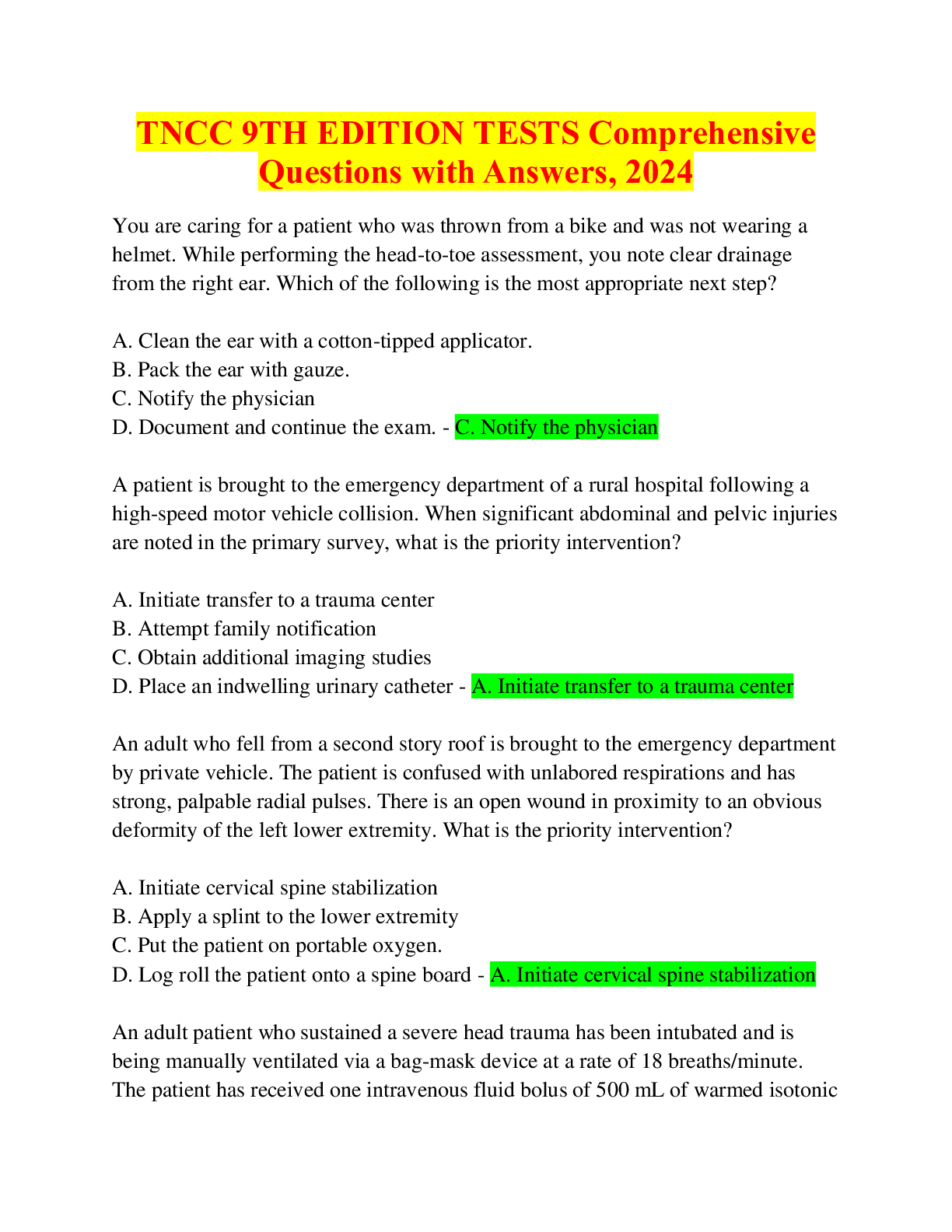
Reviews( 0 )
Document information
Connected school, study & course
About the document
Uploaded On
Jan 31, 2024
Number of pages
9
Written in
Additional information
This document has been written for:
Uploaded
Jan 31, 2024
Downloads
0
Views
13


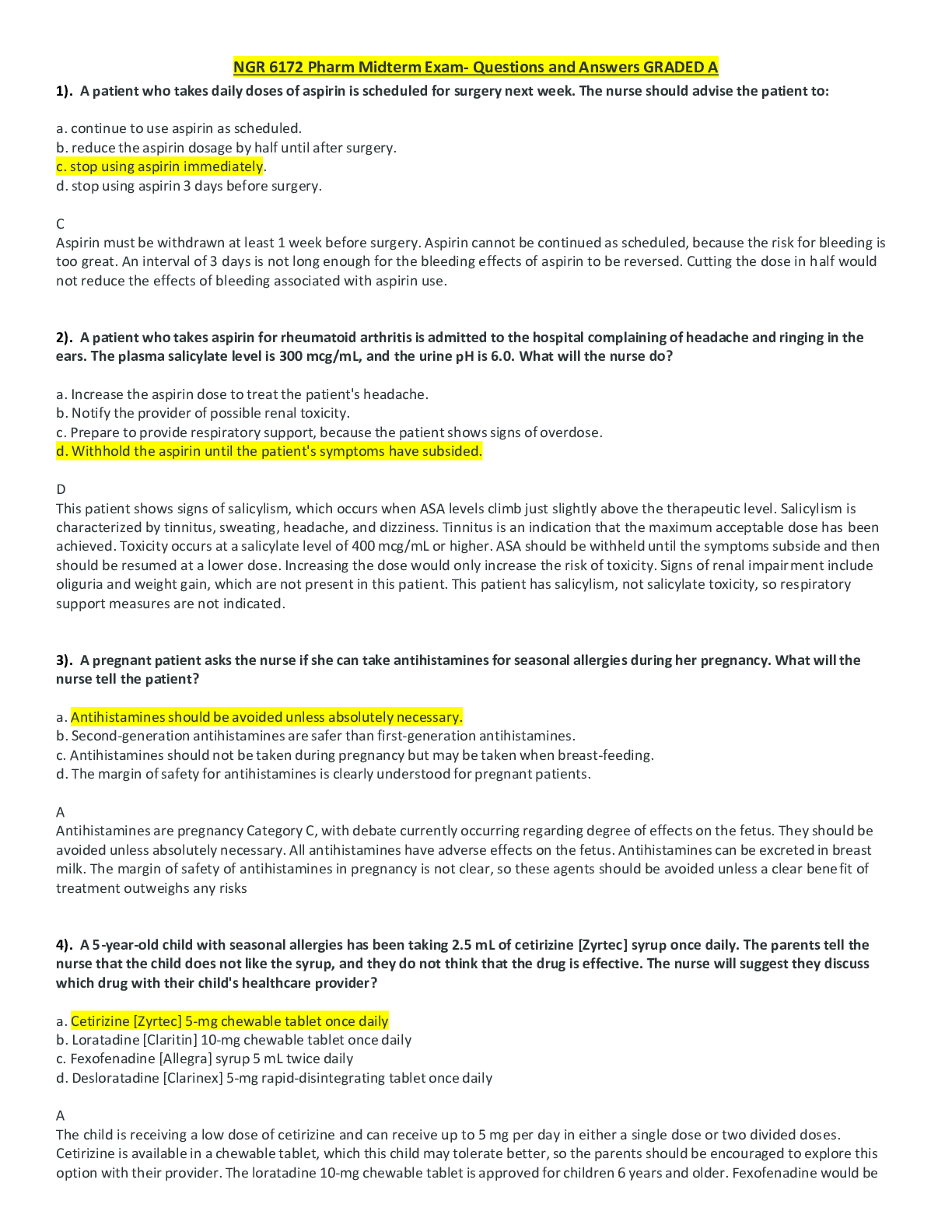

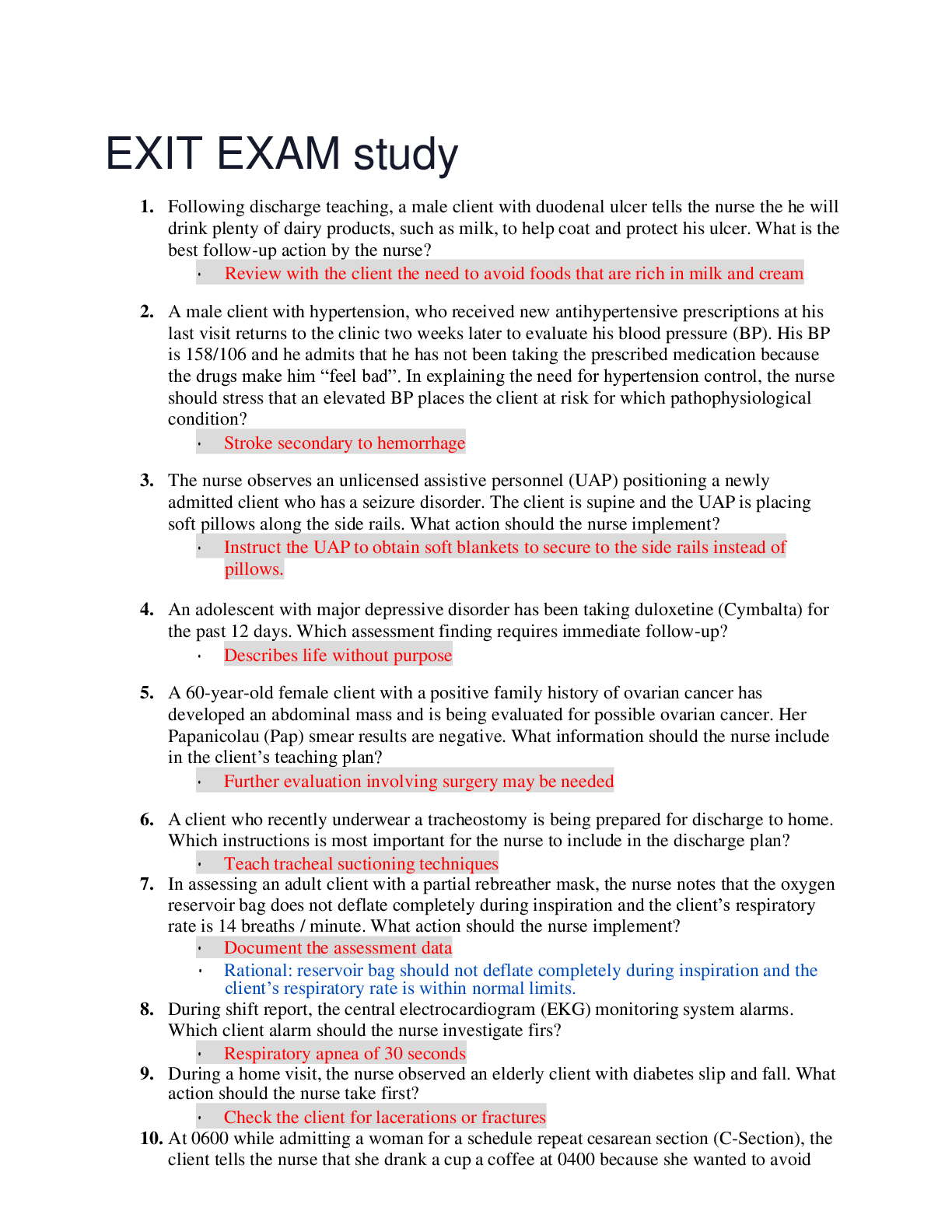
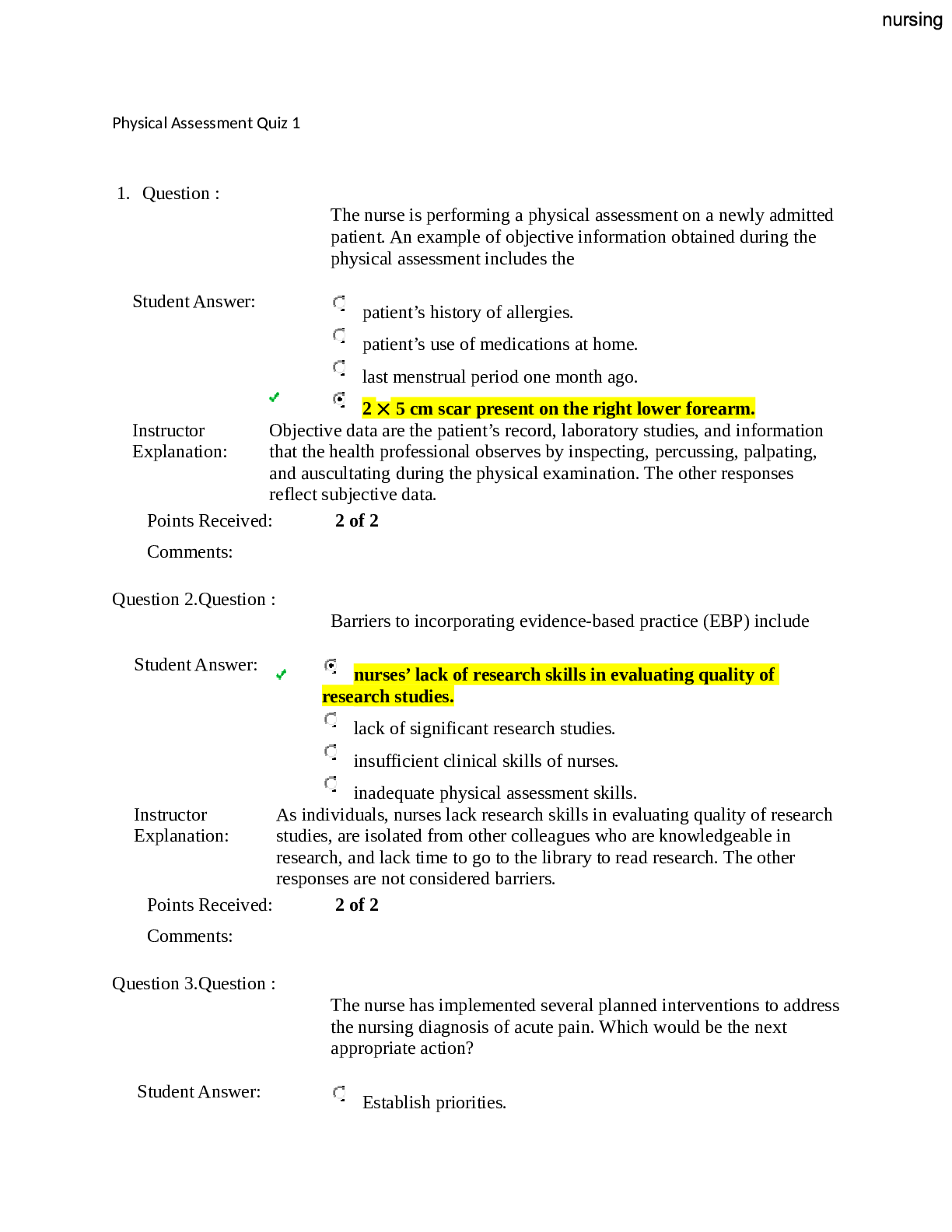
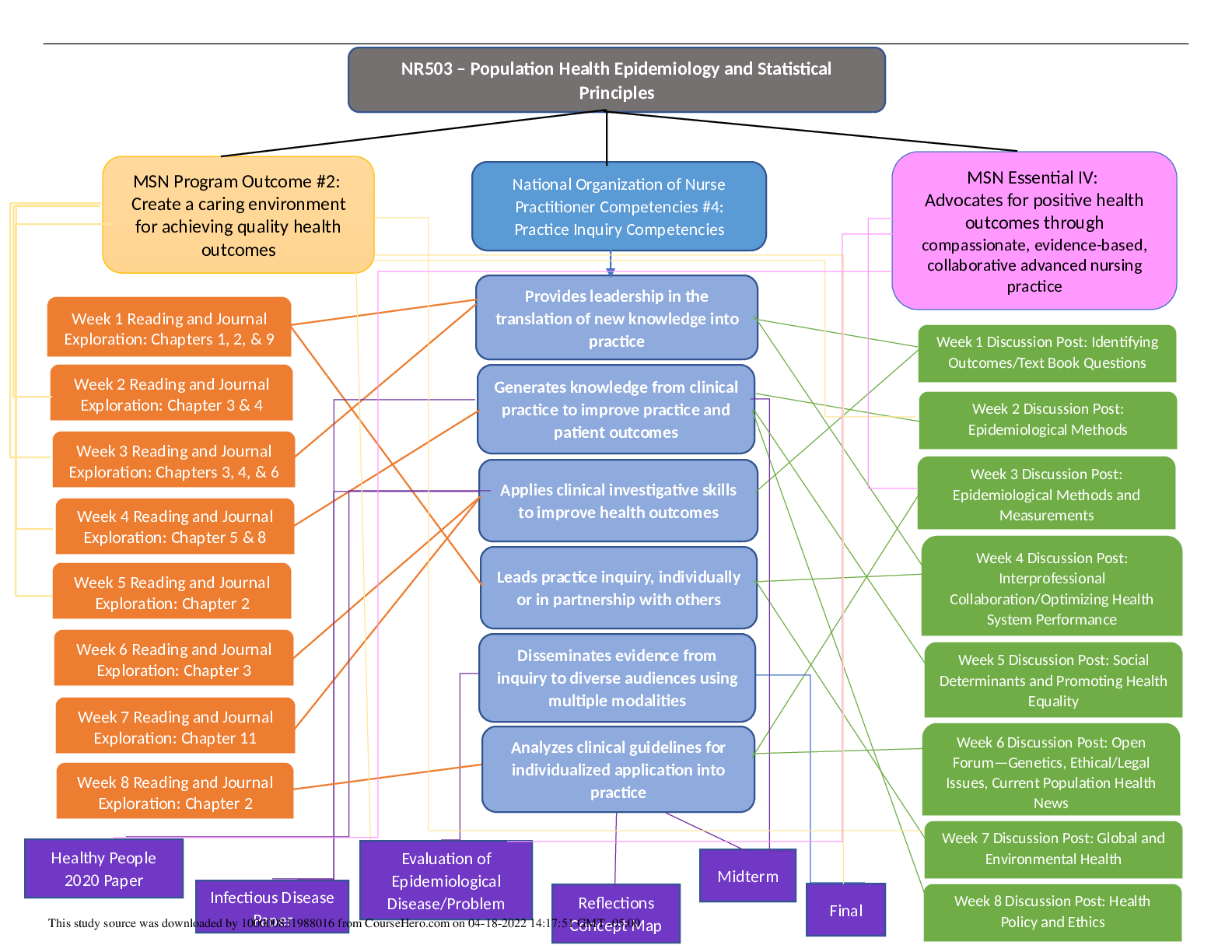

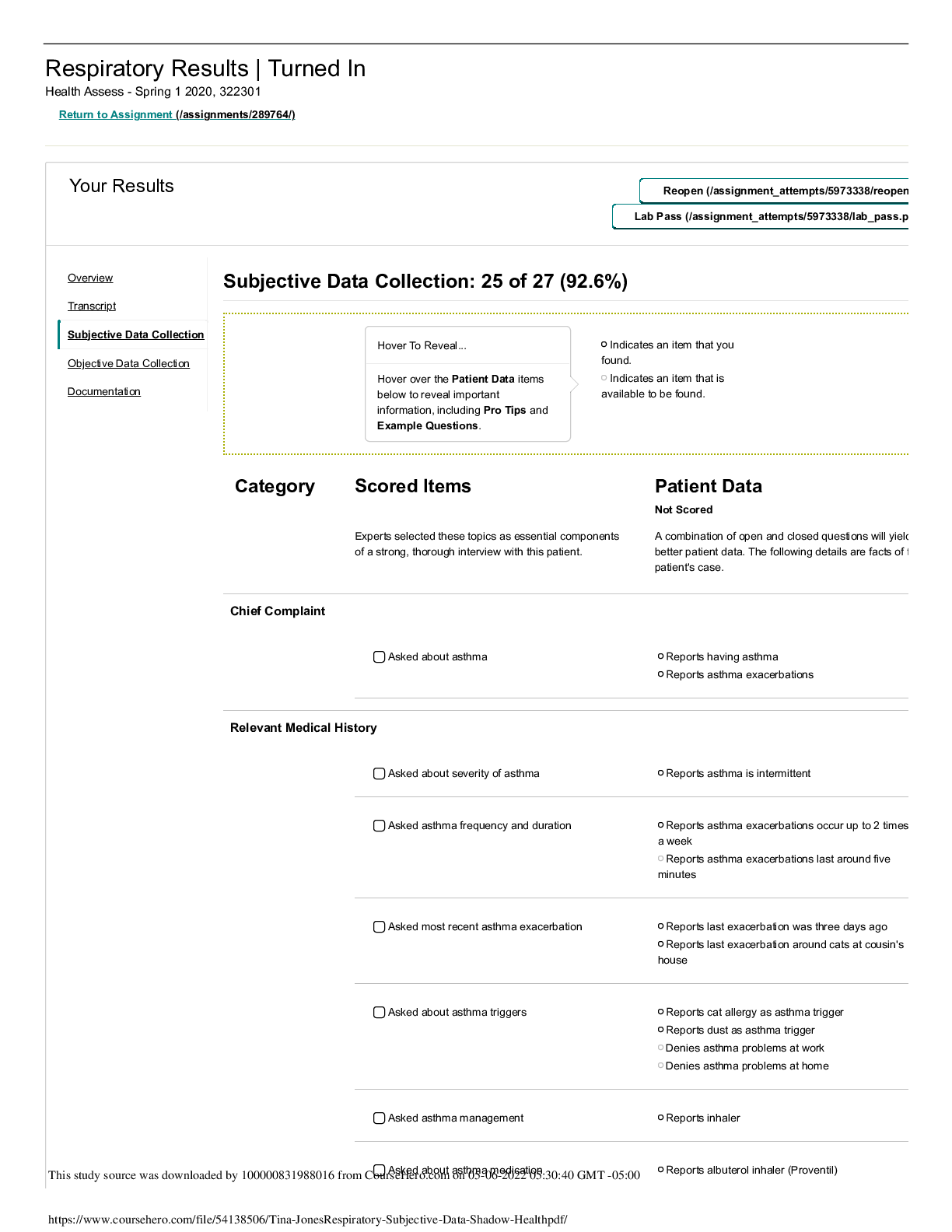
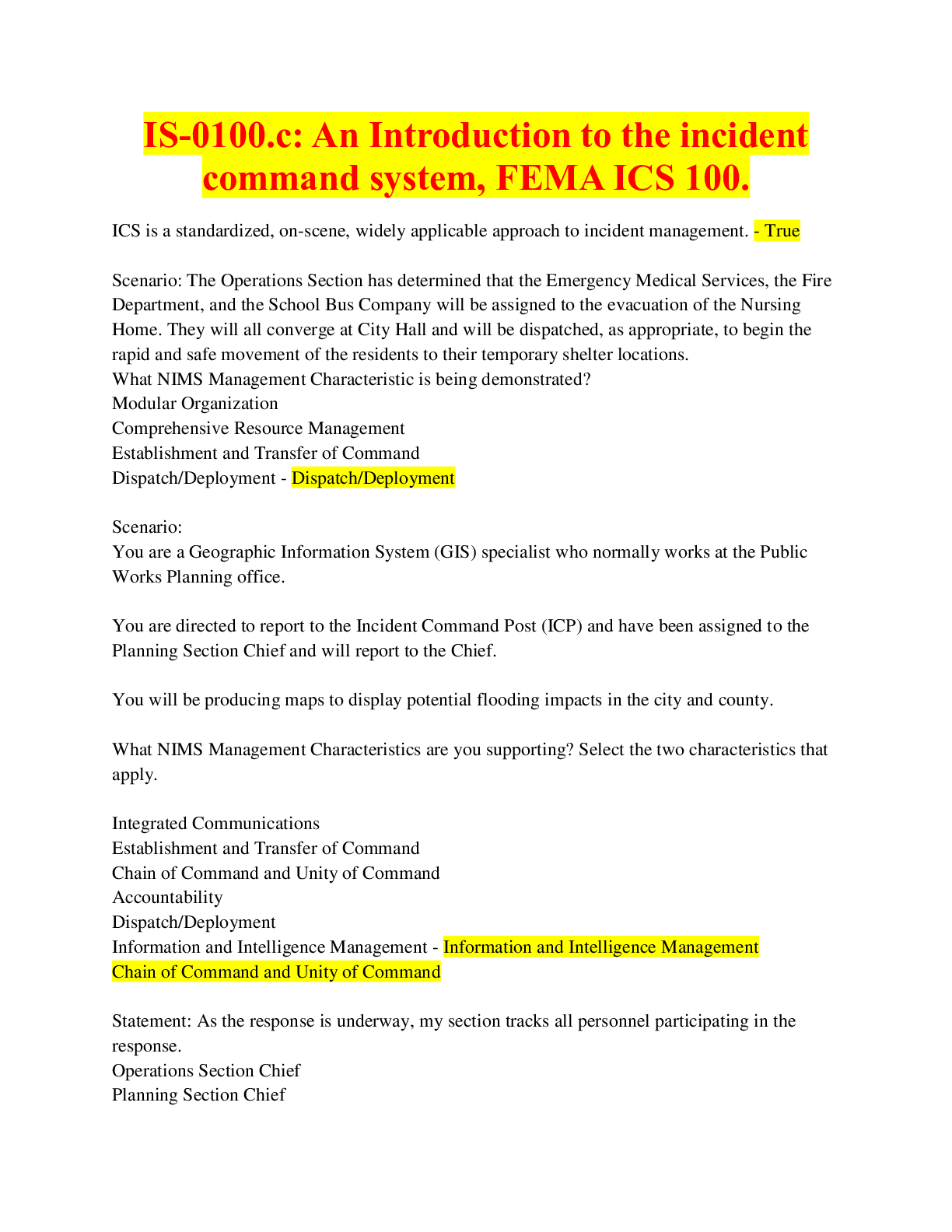

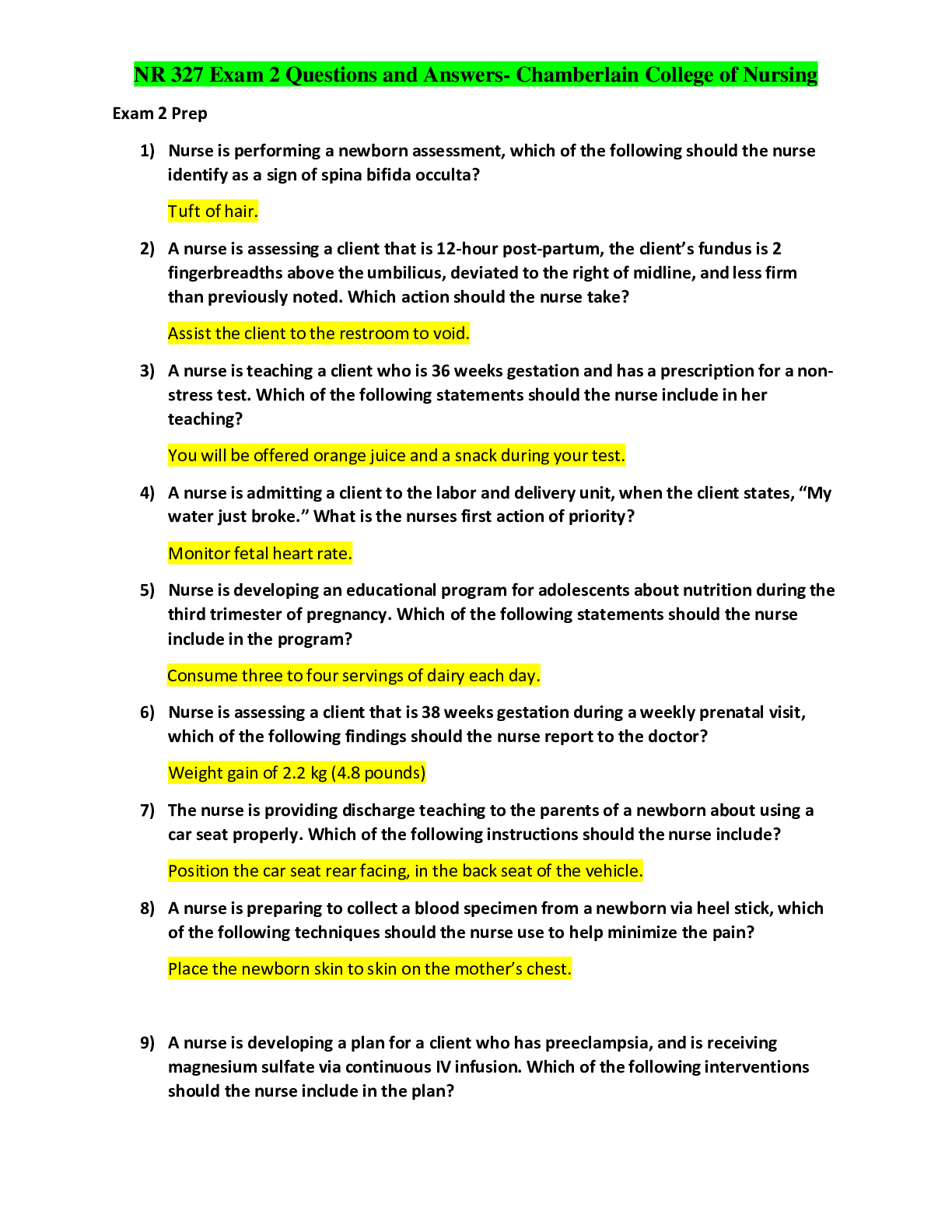

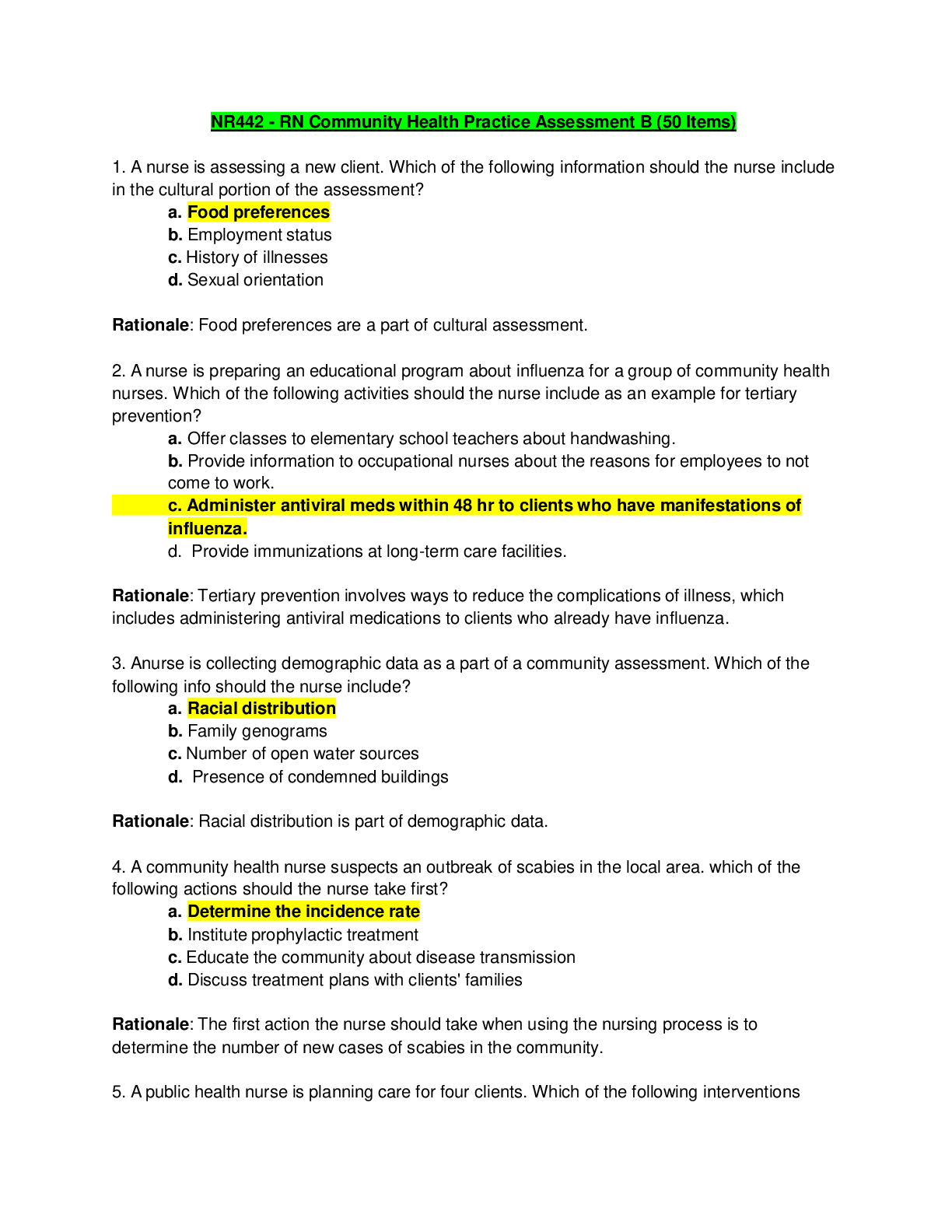
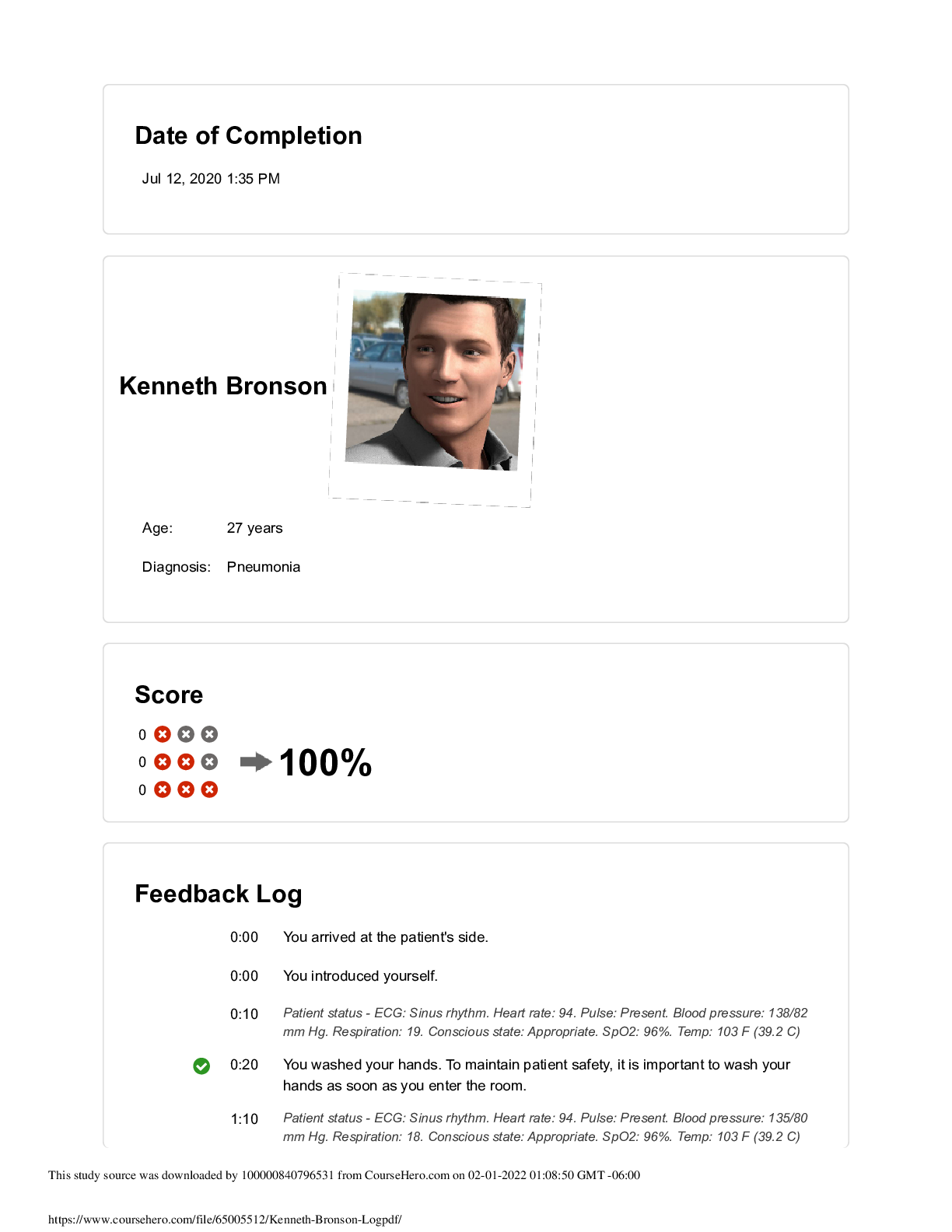

.png)



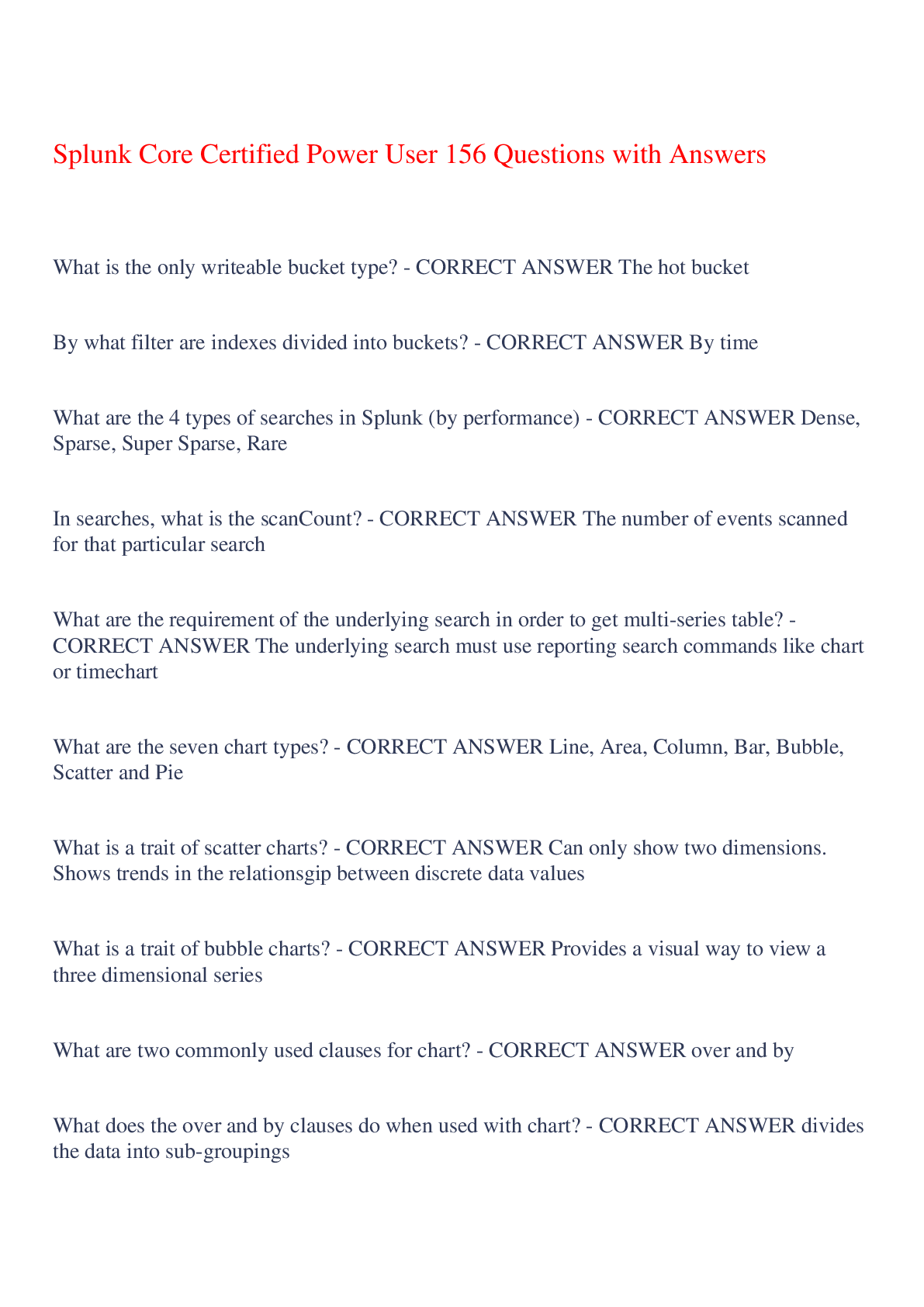


.png)
